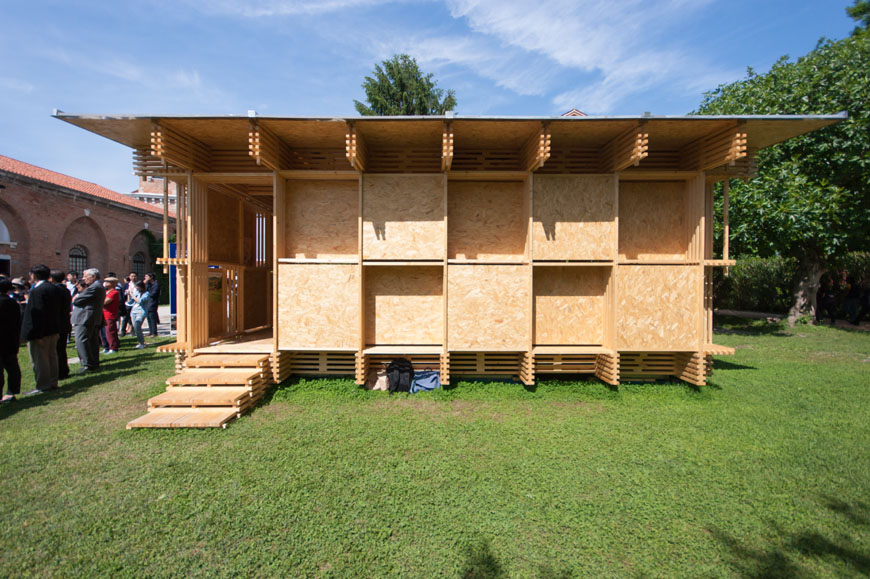
“Dou Pavilion”, Exhibition of the People’s Republic of China at the 15th Venice Architecture Biennale, photo © Inexhibit, 2016
Pavilion of the People’s Republic of China “Daily Design, Daily Tao” – Venice Architecture Biennale 2016
Daily Design, Daily Tao, the title of the exhibition of the People’s Republic of China, anticipates the themes presented in one of the most interesting national pavilions at the 15th Venice Architecture Biennale.
The title alludes to the “other side” of the frantic and “futuristic” urban and industrial modernization of China in the last decades: that of a design that re-elaborates the country’s three-thousand-year-old cultural heritage into contemporary forms.
Tao could be roughly defined as the “principle” which in Chinese culture keeps the Universe balanced and to which the relation between mankind and Nature should conform.
In design, Tao helps to create an ordered and virtuous relationship between objects and people and to make nicely-conceived products accessible to as many persons as possible.
Therefore, the exhibition presents a series of artifacts all sharing an array of common traits: to be inspired by traditional design and techniques, to be capable to meet contemporary needs, to be extremely ingenious without blatantly appearing so, to use natural and sustainable materials.
“Daily Design, Daily Tao”; exhibition of the People’s Republic of China at the 15th Venice Architecture Biennale, installation views, photos © Inexhibit, 2016
The exhibition is divided into two main sections: an exhibition of objects housed inside the pavilion, and a full-scale building prototype placed in the adjacent garden.
Through a very sober exhibition layout, the first section showcases dresses, furniture, ceramics, and architectural models, displayed side by side with traditional tools and everyday objects. No doubt that the inventiveness of both traditional and contemporary Chinese design, and the intriguing cross-references between the two, would much surprise (and perhaps disappoint) those who still regard Chinese designers as “imitators” of European and American archetypes.
Designers featured in the exhibition are:
Approach Architecture Studio; Ke MA; People’s Architecture Office; Rùn Atelier; Qun SONG; Lu WANG; Xiaoying XIE, Yan TONG, Haitao HUANG, Zhi Qu (View Unlimited Landscape Architecture, CUCD); Jingxiang ZHU; Jing ZUO
“Daily Design, Daily Tao”; exhibition of the People’s Republic of China at the 15th Venice Architecture Biennale, installation views, photos © Inexhibit, 2016
Yet, the most interesting part of the exhibition is located in the garden, where a full-scale construction, the Dou Pavilion, was built for the occasion.
Conceived by Jingxiang ZHU (b. 1972), architect and professor at the Chinese University of Hong Kong, the pavilion is a lightweight modular building, made with OSB wood panels and softwood joists. The building is inspired by the so-called “checkered playrooms”, a series of prefabricated structures conceived by Zhu as preschool educational buildings for the remote Gansu province in China and, more generally, for scattered villages in Asia and Africa.
“Dou Pavilion”; exhibition of the People’s Republic of China at the 15th Venice Architecture Biennale, photos © Inexhibit, 2016
Every element in the design – walls, floor, ceiling, seating areas, containers – is based on the same square module: the structural framework is composed of thin elements in timber, ingeniously connected by a standardized set of threaded steel bars and nuts; the result is a luminous, airy, sustainable, and cost-effective architecture which, with only some minor design adaptations, can fit the hot Venetian Summer climate as nicely as that of North-western China.
“Dou Pavilion”; exhibition of the People’s Republic of China at the 15th Venice Architecture Biennale, photos © Inexhibit, 2016